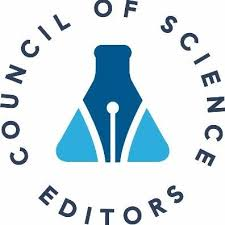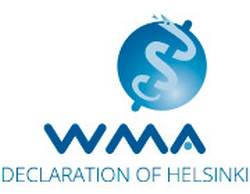1. Hu PH, Xie WF. Corticosteroid therapy in drug-induced liver injury: Pros and cons. J Dig Dis 2019; 20: 122-126.
2.
Monitorowanie działań niepożądanych leków. Informacja o wynikach kontroli NIK. LPO 430.001.2020 Nr ewid. 164/2020/P/19/097/LPO, str. 10.
3.
Chalasani N, Bonkovsky HL, Fontana R, et al. Features and outcomes of 899 patients with drug-induced liver injury: The DILIN prospective study. Gastroenterology 2015; 148: 1340-1352.e7.
4.
Björnsson ES, Bergmann OM, Björnsson HK, et al. Incidence, presentation, and outcomes in patients with drug-induced liver injury in the general population of Iceland. Gastroenterology 2013; 144: 1419-1425, 1425.e1-3; quiz e19-20.
5.
Hayashi PH, Rockey DC, Fontana RJ, et al. Death and liver transplantation within 2 years of onset of drug-induced liver injury. Hepatology 2017; 66: 1275-1285.
6.
Devarbhavi H, Asrani SK, Arab JP, et al. Global burden of liver disease: 2023 update. J Hepatol 2023; 79: 516-537.
7.
Björnsson HK, Björnsson ES. Drug-induced liver injury: Pathogenesis, epidemiology, clinical features, and practical management. Eur J Intern Med 2022; 97: 26-31.
8.
Fontana RJ, Liou I, Reuben A, et al. AASLD practice guidance on drug, herbal, and dietary supplement – induced liver injury. Hepatology 2023; 77: 1036-1065.
9.
Hoofnagle JH, Björnsson ES. Drug-induced liver injury – types and phenotypes. N Engl J Med 2019; 381: 264-273.
10.
Danan G, Benichou C. Causality assessment of adverse reactions to drugs. Part I: a novel method based on the conclusions of international consensus meetings: application to drug-induced liver injuries. J Clin Epidemiol 1993; 46: 1323-1330.
11.
Aithal GP, Watkins PB, Andrade RJ, et al. Case definition and phenotype standardization in drug-induced liver injury. Clin Pharmacol Ther 2011; 89: 806-815.
12.
Phongkitkarun S, Kobayashi S, Varavithya V, et al. Bile duct complications of hepatic arterial infusion chemotherapy evaluated by helical CT. Clin Radiol 2005; 60: 700-709.
13.
Lo RSC, Krishnamoorthy R, Freeman JG, et al. Cholestasis and biliary dilatation associated with chronic ketamine abuse: a case series. Singapore Med J 2011; 52: e52-55.
14.
Schwab GP, Wetscher GJ, Vogl W, et al. Methimazole-induced cholestatic liver injury, mimicking sclerosing cholangitis. Langenbecks Arch Chir 1996; 381: 225-227.
15.
Horsley-Silva JL, Dow EN, Menias CO, et al. Docetaxel induced sclerosing cholangitis. Dig Dis Sci 2015; 60: 3814-3816.
16.
Gisondi P, Targher G, Zoppini G, et al. Non-alcoholic fatty liver disease in patients with chronic plaque psoriasis. J Hepatol 2009; 51: 758-764.
17.
Van der Voort EA, Koehler EM, Dowlatshahi EA, et al. Psoriasis is independently associated with nonalcoholic fatty liver disease in patients 55 years old or older: results from a population-based study. J Am Acad Dermatol 2014; 70: 517-524.
18.
Roberts KK, Cochet AE, Lamb PB, et al. The prevalence of NAFLD and NASH among patients with psoriasis in a tertiary care dermatology and rheumatology clinic. Aliment Pharmacol Ther 2015; 41: 293-300.
19.
Narayanasamy K, Sanmarkan AD, Rajendran K, et al. Relationship between psoriasis and non-alcoholic fatty liver disease. Prz Gastroenterol 2016; 11: 263-269.
20.
Frankowski M, Świerkot J, Gomułkiewicz M, et al. Usefulness of nonivasive diagnostic procedures for assessment of methotrexate hepatotoxicity in patients with rheumatoid arthritis. Rheumatol Int 2022; 42: 631-638.
21.
Oki E, Kakeji Y, Taketomi A, et al. Transient elastography for the prediction of oxaliplatin-associated liver injury in colon cancer patients: a preliminary analysis. J Gastrointest Cancer 2008; 39: 82-85.
22.
Liver Tox: Clinical and Research Information on Drug-Induced Liver Injury. https://www.ncbi.nlm.nih.gov/books/NBK548456/
23.
Ahmad J, Barnhart HX, Bonacini M, et al. Value of liver biopsy in the diagnosis of drug-induced liver injury. J Hepatol 2022; 76: 1070-1078.
24.
European Association for the Study of the Liver. EASL Clinical Practice Guideline: Drug-induced liver injury. J Hepatol 2019; 70: 1222-1261.
25.
Lohse AW, Sebode M, Bhathal PS, et al. Consensus recommendations for histological criteria of autoimmune hepatitis from the International AIH Pathology Group: Results of a workshop on AIH histology hosted by the European Reference Network on Hepatological Diseases and the European Society of Pathology. Liver Int 2022; 42: 1058-1069.
26.
Suzuki A, Brunt EM, Kleiner DE, et al. The use of liver biopsy evaluation in discrimination of idiopathic autoimmune hepatitis versus drug-induced liver injury. Hepatology 2011; 54: 931-939.
27.
Febres-Aldana CA, Alghamdi S, Krishnamurthy K, et al. Liver fibrosis helps to distinguish autoimmune hepatitis from DILI with autoimmune features: a review of twenty cases. J Clin Transl Hepatol 2019; 7: 21-26.
28.
Cirulli ET, Nicoletti P, Abramson K, et al. A missense variant in PTPN22 is a risk factor for drug-induced liver injury. Gastroenterology 2019; 156: 1707-1716.e2.
29.
Daly AK, Donaldson PT, Bhatnagar P, et al. HLA-B*5701 genotype is a major determinant of drug-induced liver injury due to flucloxacillin. Nat Genet 2009; 41: 816-819.
30.
Lucena MI, Molokhia M, Shen Y, et al. Susceptibility to amoxicillin-clavulanate-induced liver injury is influenced by multiple HLA class I and II alleles. Gastroenterology 2011; 141: 338-347.
31.
Nicoletti P, Aithal GP, Bjornsson ES, et al. Association of liver injury from specific drugs, or groups of drugs, with polymorphisms in HLA and other genes in a genome-wide association study. Gastroenterology 2017; 152: 1078-1089.
32.
Urban TJ, Nicoletti P, Chalasani N, et al. Minocycline hepatotoxicity: Clinical characterization and identification of HLA-B *35:02 as a risk factor. J Hepatol 2017; 67: 137-144.
33.
Benichou C, Danan G, Flahault A. Causality assessment of adverse reactions to drugs. Part II: an original model for validation of drug causality assessment methods: case reports with positive rechallenge. J Clin Epidemiol 1993; 46: 1331-1336.
34.
Danan G, Teschke R. RUCAM in drug and herb induced liver injury: the update. Int J Mol Sci 2015; 17: 14-30.
35.
Maria VA, Victorino RM. Development and validation of a clinical scale for the diagnosis of drug-induced hepatitis. Hepatology 1997; 26: 664-669.
36.
Lucena M, Camargo R, Andrade RJ, et al. Comparison of two clinical scales for causality assessment in hepatotoxicity. Hepatology 2001; 33: 123-130.
37.
Takikawa H, Takamori Y, Kumagi T, et al. Assessment of 287 Japanese cases of drug induced liver injury by the diagnostic scale of the international consensus meeting. Hepatol Res 2003; 27: 192-195.
38.
Hanatani T, Sai K, Tohkin M, et al. A detection algorithm for drug-induced liver injury in medical information databases using the Japanese diagnostic scale and its comparison with the Council for International Organizations of medical sciences/the Roussel Uclaf causality assessment method scale. Pharmacoepidemiol Drug Saf 2014; 23: 984-988.
39.
Hayashi PH, Lucena MI, Fontana RJ, et al. A revised electronic version of RUCAM for the diagnosis of drug induced liver injury. Hepatology 2022; 76: 18-31.
40.
Stine JG, Lewis JH. Current and future directions in the treatment and prevention of drug induced liver injury: a systematic review. Expert Rev Gastroenterol Hepatol 2016; 10: 517-536.
41.
Perrott J, Murphy NG, Zed PJ. L-carnitine for acute valproic acid overdose: a systematic review of published cases. Ann Pharmacother 2010; 44: 1287-1293.
42.
Defitelio – summary of product characteristics. https://www.ema.europa.eu/en/documents/product-information/defitelio-epar-product-information-pl.pdf.
43.
Direct healthcare professional communication (DHPC): Defitelio (defibrotide): Do not use for prophylaxis of veno-occlusive disease (VOD) after post-hematopoietic stem-cell transplantation (HSCT). https://www.ema.europa.eu/en/medicines/dhpc/defitelio.
44.
Lee WM, Hynan LS, Rossaro L, et al. Intravenous N-acetylcysteine improves transplant-free survival in early stage non-acetaminophen acute liver failure. Gastroenterology 2009; 137: 856-864.
45.
Squires RH, Dhawan A, Alonso E, et al. Intravenous N-acetylcysteine in pediatric patients with nonacetaminophen acute liver failure: a placebo-controlled clinical trial. Hepatology 2015; 57: 1542-1549.
46.
Avancini J, Maragno L, Santi CG, et al. Drug reaction with eosinophilia and systemic symptoms/drug-induced hypersensitivity syndrome: clinical features of 27 patients. Clin Exp Dermatol 2015; 40: 851-859.
47.
Hu PF, Wang PQ, Chen H, et al. Beneficial effect of corticosteroids for patients with severe drug-induced liver injury. J Dig Dis 2016; 17: 618-627.
48.
Lang SM, Ortmann J, Rostig S, et al. Ursodeoxycholic acid attenuates hepatotoxicity of multidrug treatment of mycobacterial infections: a prospective pilot study. Int J Mycobacterol 2019; 8: 89-92.
Copyright: © Clinical and Experimental Hepatology. This is an Open Access journal, all articles are distributed under the terms of the Creative Commons Attribution-NonCommercial-ShareAlike 4.0 International (CC BY-NC-SA 4.0). License (http://creativecommons.org/licenses/by-nc-sa/4.0/) enables reusers to distribute, remix, adapt, and build upon the material in any medium or format for noncommercial purposes only, and only so long as attribution is given to the creator. If you remix, adapt, or build upon the material, you must license the modified material under identical terms.






